
Micromeritics TriStar II Plus
High throughput BET surface area analyzer
High-performance physisorption analyzers for precise surface area, pore size and volume in powders and particulate materials

Micromeritics' comprehensive range of high-performance physisorption analyzers are designed to meet diverse material characterization needs. Our instruments provide precise measurements of surface area and porosity, enabling researchers and industries to optimize material performance across various applications.
Each analyzer is engineered for specific requirements, from rapid surface area measurements, through high-throughput analysis, to advanced micropore analysis.

High throughput BET surface area analyzer

High performance gas adsorption

Accelerated surface area and porosity
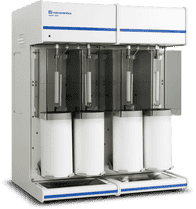
Surface area and porosimetry system

Surface area and porosimetry system

Rapid and precise surface area analysis

Porosity and surface area are critical factors in bone materials to ensure biocompatibility and proper osseointegration. High-resolution pore size and surface area analysis help researchers optimize the structure of bioactive ceramics and scaffolds. Characterization of micro- and mesoporosity ensure materials support cell adhesion and bone growth.
Instruments: 3Flex, ASAP Series, TriStar II Plus, Gemini
Adsorbent materials rely on well-defined porosity and high surface area for efficient gas and liquid adsorption. Advanced micropore and mesopores analysis is ideal for characterizing activated carbons, zeolites, and silicas. These analyzers help industries optimize adsorbents for gas storage, separation, and purification applications.
Instruments: HPVA II, 3Flex, ASAP Series
In additive manufacturing, powder-based materials require precise surface area and porosity control to ensure optimal flowability and final part performance. Fast and reliable physisorption measurements are ideal for quality control in metal and polymer powders.
Instruments: TriStar II Plus, Gemini, ASAP Series
The performance of battery materials is highly dependent on their surface and pore structure, which influence ion transport and storage capacity. Precise measurements of porosity and gas adsorption behavior help researchers optimize battery components for improved energy density and cycle life.
Instruments: TriStar II Plus, 3Flex, ASAP Series
Catalysts require high surface area and controlled porosity for optimal reaction efficiency. Detailed pore size distribution and adsorption/desorption isotherms enable the optimization of catalyst formulations.
Instruments: 3Flex, ASAP 2020 Series, TriStar II Plus
The porosity of ceramic materials affects their mechanical strength, thermal stability, and filtration efficiency. Surface area and porosity analysis supports the development of advanced ceramics for aerospace, biomedical, and industrial applications.
Instruments: TriStar II Plus, ASAP Series, Gemini
MOFs and COFs are known for their ultrahigh surface area complex pore structures, making their characterization crucial for applications in gas storage, separation, and catalysis. Low-pressure adsorption capabilities enable precise micropore analysis to help researchers develop materials with tailored porosity for specific applications.
Instruments: 3Flex, ASAP Series, HPVA II
In pharmaceutical formulations, surface area and porosity influence drug dissolution rates and bioavailability. Detailed pore size characterization ensures consistency in excipients and active pharmaceutical ingredients (APIs).
Instruments: TriStar II Plus, Gemini
Zeolites play a vital role in catalysis and adsorption, requiring precise pore size and surface area measurements. Accurate characterization of zeolite frameworks demands exceptional resolution for analyzing microporous materials.
Instruments: 3Flex, ASAP Series

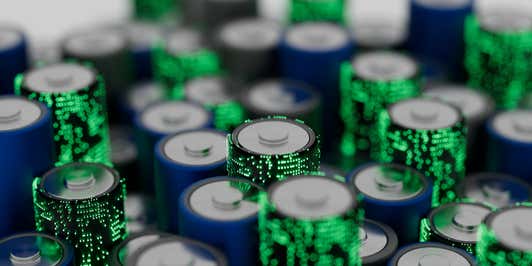




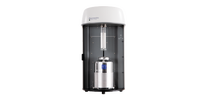
Micromeritics TriStar II PlusHigh throughput BET surface area analyzer |
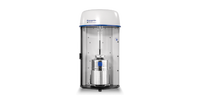
Micromeritics GeminiRapid and precise surface area analysis |

Micromeritics 3FlexHigh performance gas adsorption |

Micromeritics ASAP 2460Surface area and porosimetry system |
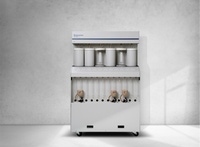
Micromeritics ASAP 2425Surface area and porosimetry system |
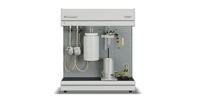
Micromeritics ASAP 2020 PlusAccelerated surface area and porosity |
|
|---|---|---|---|---|---|---|
| Sample stations | 3 | 1 | 3 | 2+ | 1 | 1 |
| Automation | Semi-automated | Manual | Advanced automation | Fully automated | Semi-automated | Customizable |
| Pore size range | Mesoporous | Mesoporous | Micro, meso & macroporous | Micro- and Mesoporous | Microporous | Micro- and Mesoporous |
| Best for: | Routine QC, research | Cost-effective QC | High-resolution studies | Industrial scale | Research and QC | Versatile applications |